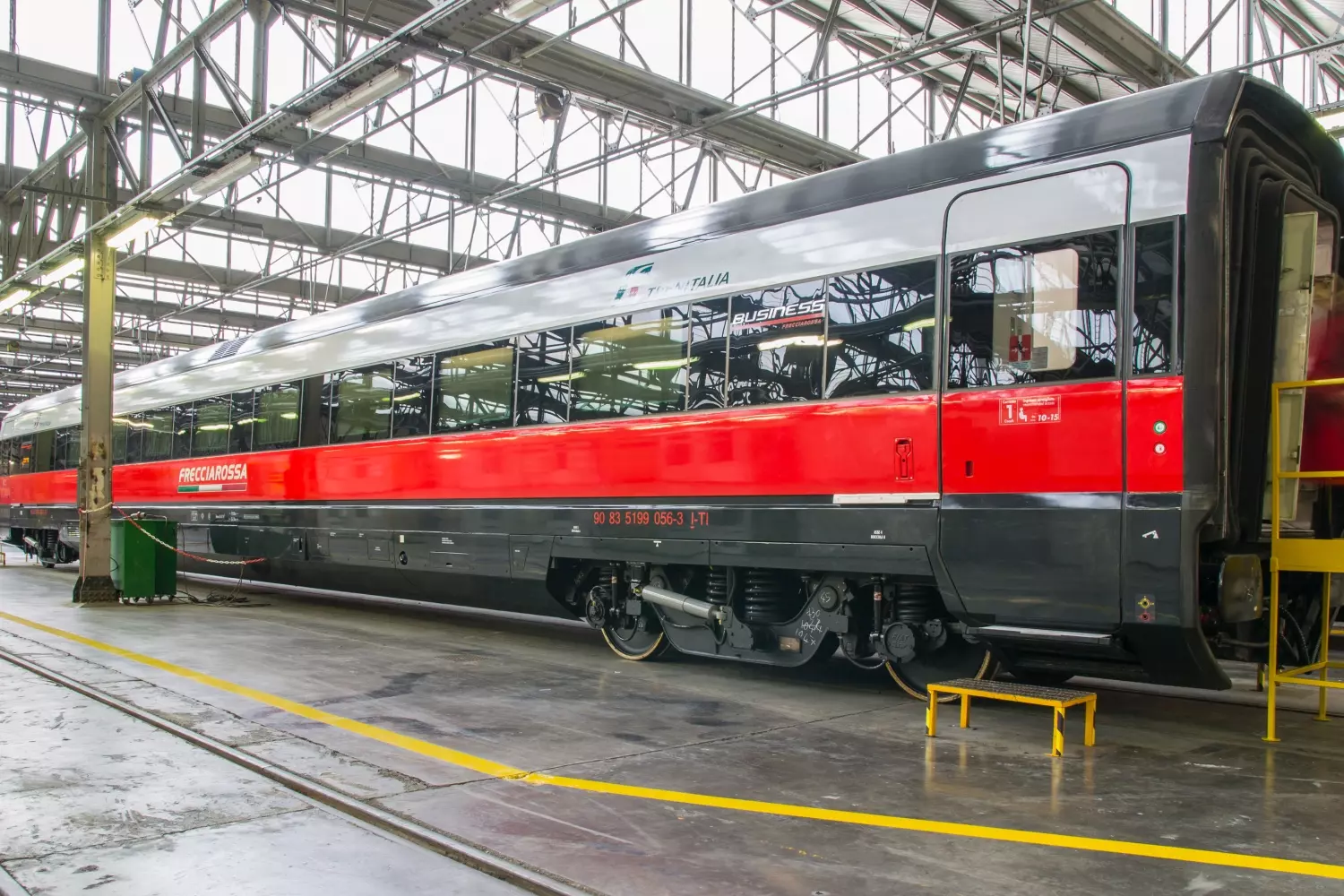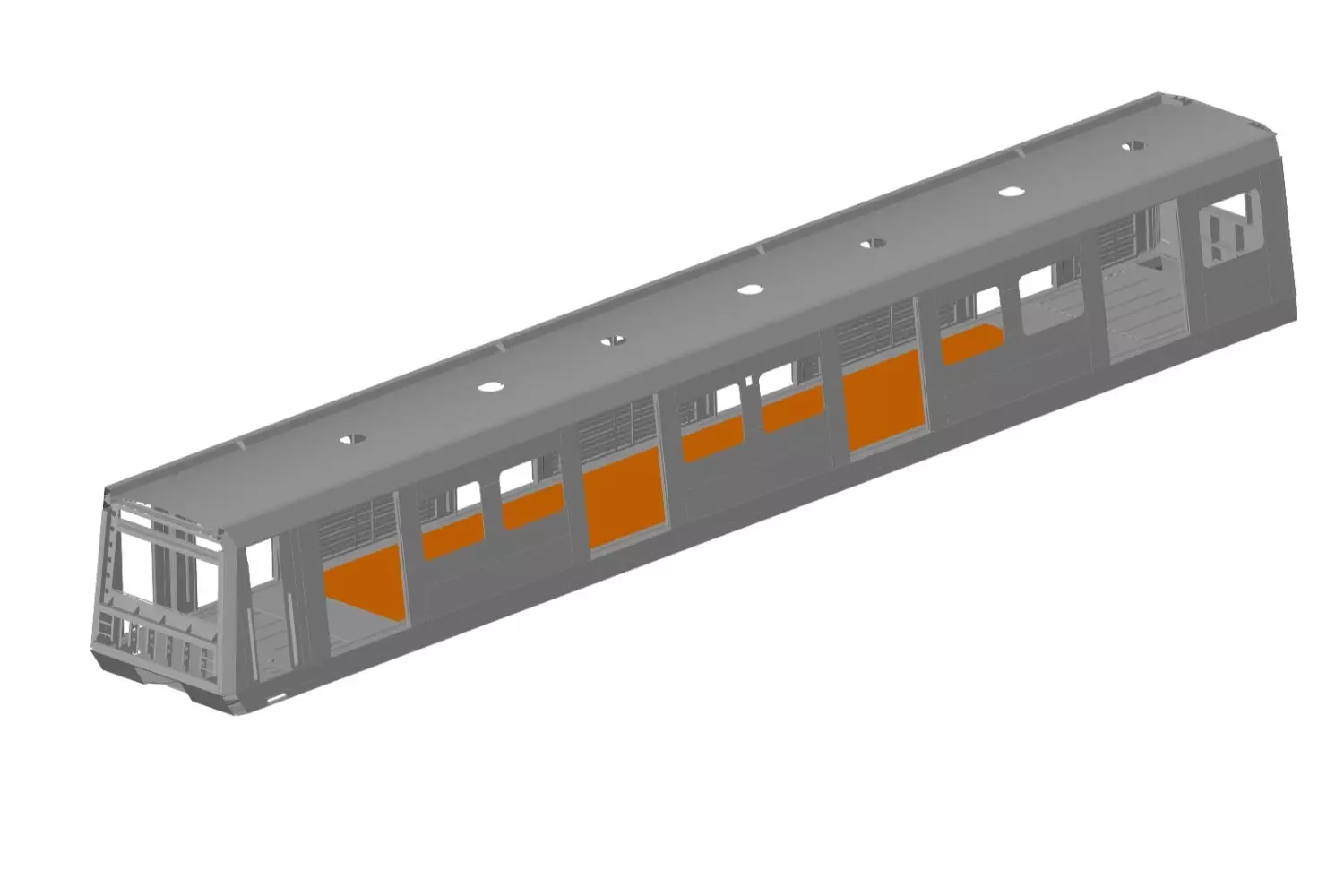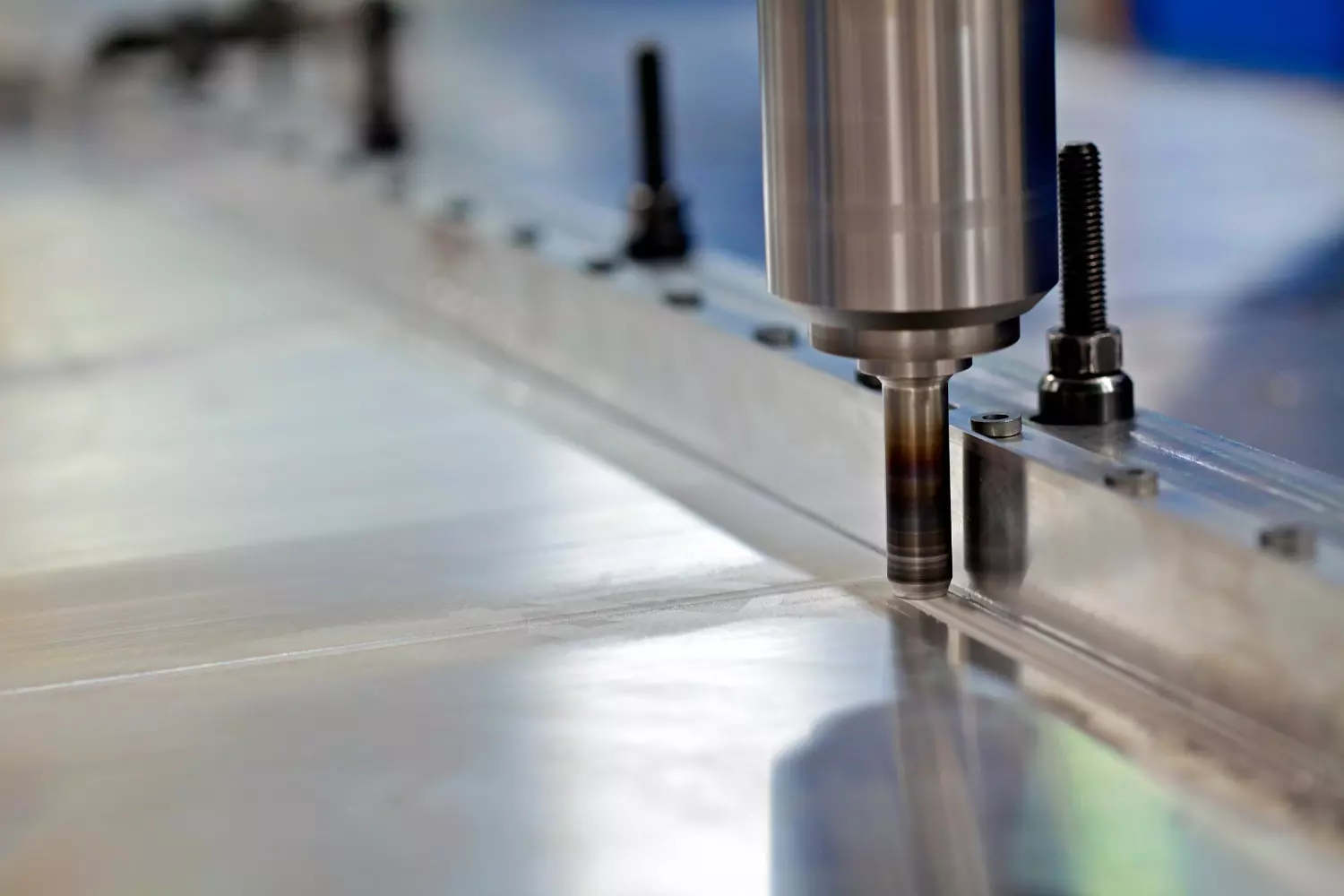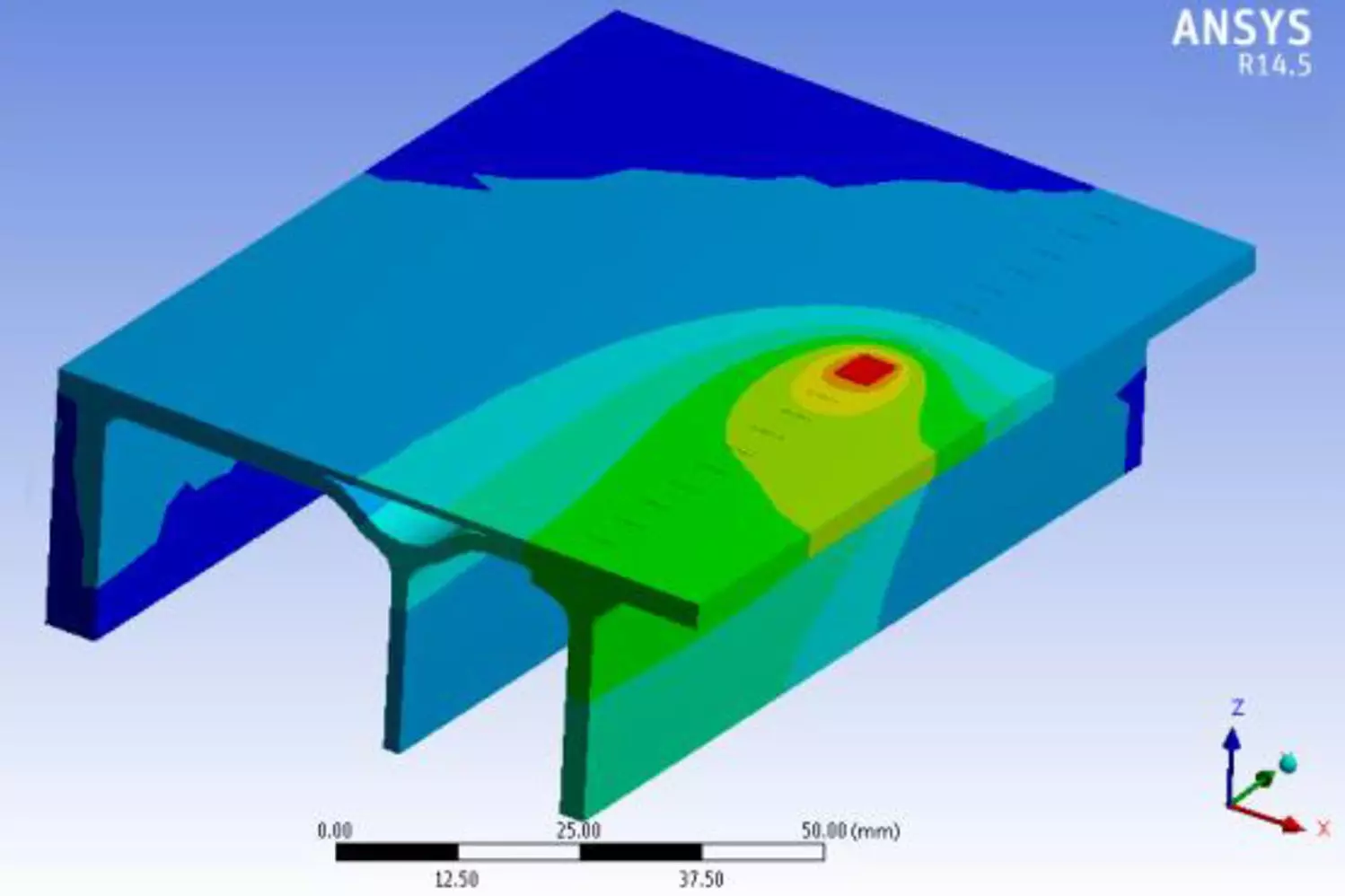Integrated sandwich construction makes for lighter rolling stock
Generally speaking, railway rolling stock is extremely heavy. Lighter goods wagons and carriages not only diminish the wear and tear subjected to their wheels and the track itself but also require less traction. In future, modern sandwich construction techniques promise to make slimmed-down rolling stock a reality.
Rolling-stock manufacturers need to keep a close eye on the weight of the vehicles they produce. Today’s passenger carriages are expected to provide a high degree of comfort and a plethora of information infrastructure, while their maximum weight per axle remains strictly limited. Innovative light-frame construction techniques are required to meet these challenges. Working with the ZHAW School of Engineering, the sandwich element manufacturer 3A Composites and the manufacturing technology specialist Rapid Technic AG initiated a research project aimed at developing integrated sandwich technology (ISTech) to a point where its structural characteristics met the requirements for use in railway rolling stock. The project has the backing of the Commission for Technology and Innovation (CTI).
«Sandwich structures incorporate two outer surfaces joined together by a layer of light inner material.»
Prof. Dr. Hanfried Hesselbarth, Head of Light-frame Construction, Institute of Mechanical Systems (IMES)
Huge scope for reducing weight
“Sandwich structures incorporate two outer surfaces joined together by a layer of light inner material,” as Professor Hanfried Hesselbarth of the Institute of Mechanical Systems (IMES) explains. “This gives them great flexural strength combined with low mass.” Structures of this kind are already proving highly effective in the construction of buses, trams and superstructures for trucks. They are produced by pressing the different components together into a specially designed frame. So far, there have been only a few instances where this technology has been able to deliver economically viable solutions for railway applications. The project group began by testing this sandwich technology on an existing railway carriage. These experiments showed that by using sandwich construction techniques to build the carriage floor, it was possible to reduce the overall weight of the carriage by several hundred kilogrammes without sacrificing any of the floor’s structural robustness. “For an Intercity passenger carriage, systematic use of integrated sandwich technology would even reduce overall weight by more than half a tonne,” Hesselbarth explains. “For an entire train, that would equate to a reduction in the load placed on the wheels and the track of quite a few tonnes.” That sort of weight reduction would also have a positive impact on general wear and tear, thus helping to reduce the cost of maintaining the railway network.
Not yet adopted by the railway industry
Railway carriages are welded constructions made of steel or aluminium. Extruded aluminium profile techniques have proved a particularly effective means of constructing lateral walls, roofs and floors which are then welded together to create the outer frame of a carriage. According to Hesselbarth, the outer walls of carriages built in this way are at least 2.5 millimetres thick. “That means significantly more material is sometimes being used than would be required to achieve the requisite structural robustness. This is where sandwich construction with outer layers of about one millimetre would have the potential to save substantial amounts of weight.” Components built of these composite materials could also bear considerably greater loads and significantly increase the strength of the carriage frame if they were welded rather than stuck into it. The objective of the research project is to develop a technology which can integrate sandwich panels into a welded carriage frame.
Major technical challenges
Traditional welding processes can cause the joins between the various components of a sandwich to become so hot that they are destroyed. Conversely, the adhesive components in these structures can severely weaken the welds. This means that when sandwich components are being welded into constructions subjected to significant mechanical stresses, the characteristic weight savings offered by the sandwich structure can only be achieved if the welded surfaces are kept separate from the adhesive surfaces and the welding process radiates as little heat as possible. “Friction stir welding is particularly well suited to this task, as this generates heat through friction when the rotating welding tool comes into contact with the workpieces which need to be joined together,” as Hesselbarth explains. “The materials are heated only just to their melting point and are then mechanically mixed together, as it were, through a stirring action.” Rapid Technik AG, based in Killwangen, are contributing their extensive expertise in friction stir welding (FSW) to this project, while the ZHAW School of Engineering have conducted a number of prototype tests where they examined the thermodynamic characteristics and structural robustness of a variety of potential constructions. The results demonstrate that combining a sandwich construction with FSW technology can produce the desired results.
«All the results are positive, so we can now produce trial samples using integrated sandwich technology and subject them to the necessary static and dynamic tests.»
Prof. Dr. Hanfried Hesselbarth, Head of Light-frame Construction, Institute of Mechanical Systems (IMES)
Test results positive
In the first stage of the project, the geometry of the transitional area between the sandwich element and its welded joins to the carriage frame was determined and the tensions and deformations to which it was subjected were examined by means of finite element analysis. Meanwhile, the team at Rapid Techik AG carried out initial tests to determine the ideal characteristics of the FSW welding tool and its optimal welding parameters. Temperature measurements carried out during the welding tests confirmed the calculation results. As Hesselbarth explains, “the results are positive, so we can now produce trial samples using integrated sandwich technology and subject them to the necessary static and dynamic tests." The impact of manufacturing tolerances on the structural robustness of the carriage frames is also being evaluated and the technology used to produce the integrated sandwich elements is being optimised so as to minimise the number of individual work processes used in their construction.
At a glance
Participating institutes and centres:
Project partner:
Financing:
- The Commission for Technology and Innovation CTI
Project status: finished



